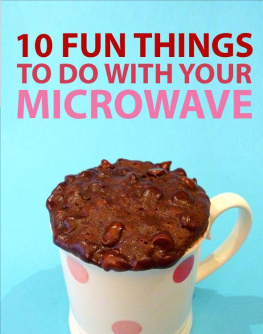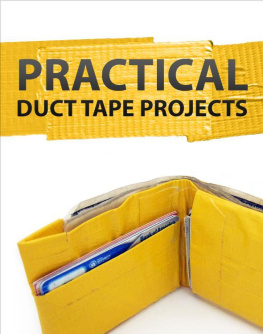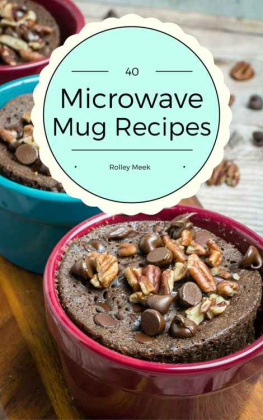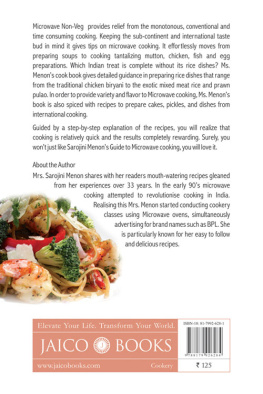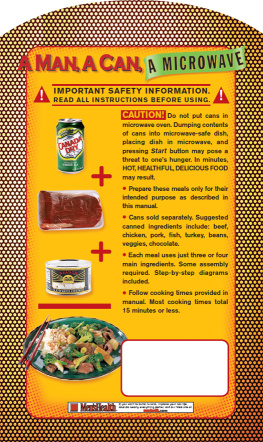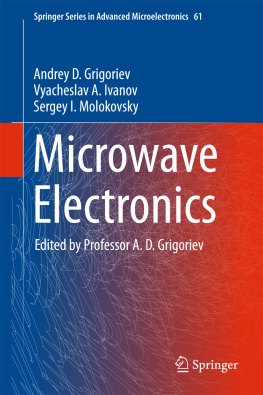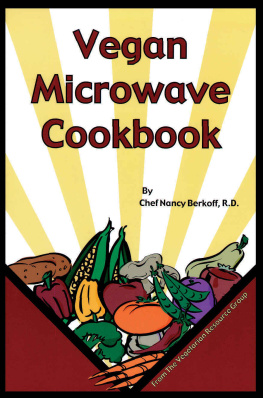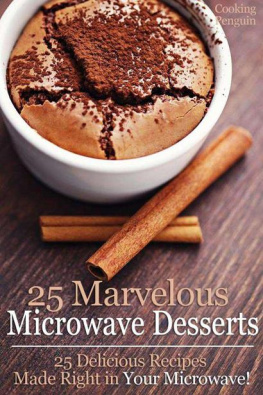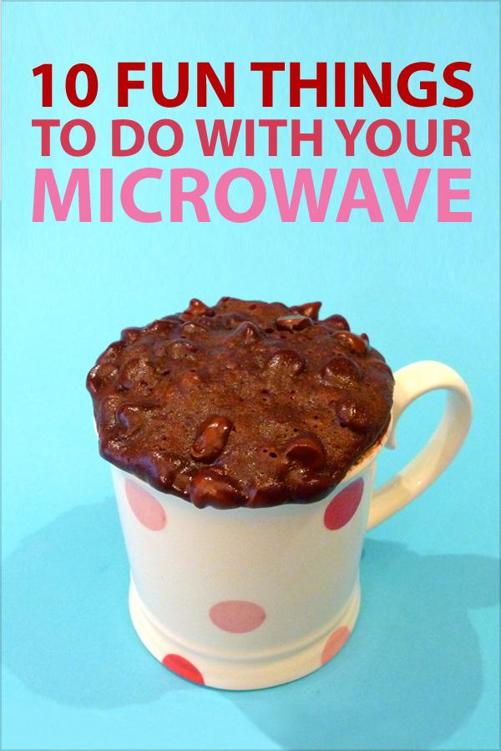
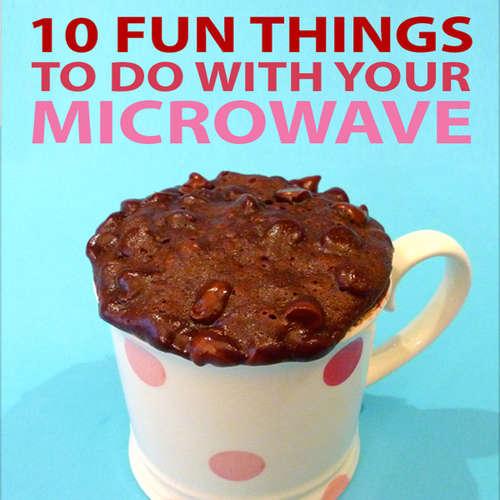
Introduction
Find uses for your microwave you never knew existed with this fun collection from Instructables.com . Dont sell your microwave short! Whether you are conducting science experiments or making gifts, you will unleash your microwave's true potential with these creative and unconventional projects.
Instructables is the most popular project-sharing community on the Internet. We provide easy publishing tools to enable passionate, creative people like you to share their most innovative projects, recipes, skills, and ideas. Instructables has over 40,000 projects covering all subjects, including crafts, art, electronics, kids, home improvement, pets, outdoors, reuse, bikes, cars, robotics, food, decorating, woodworking, costuming, games, and more. Check it out today!
Sarah James
Editor, Food & Living
Instructables.com
Table of Contents
Author and Copyright Notices
Instructable: Microwave Science Experiments - Will it blow up? What can we stick in? Microwave Night at MITERS
Author: stasterisk
License: Attribution-NonCommercial-ShareAlike (by-nc-sa)
Instructable: Edible Chemistry from the Microwave!
Author: imshanedulong
License: Attribution-NonCommercial-ShareAlike (by-nc-sa)
Instructable: Build a Microwave Transformer Homemade Stick/Arc Welder
Author: stasterisk
License: Attribution-NonCommercial-ShareAlike (by-nc-sa)
Instructable: How To Measure the Speed of Light... Using Chocolate!
Author: bradpowers
License: Public Domain (pd)
Instructable: How to make shell candles
Author: Danger is my middle name
License: Attribution-NonCommercial-ShareAlike (by-nc-sa)
Instructable: Microwaved CD Candle Holder
Author: drumperry
License: Attribution-NonCommercial-ShareAlike (by-nc-sa)
Instructable: 5-minute Chocolate Cake
Author: scoochmaroo
License: Public Domain (pd)
Instructable: The Microwave Bday Cake
Author: italiancooking
License: Attribution-NonCommercial-ShareAlike (by-nc-sa)
Instructable: Easy Koolaid Microwave Wool Dye Technique
Author: myrrhmaid
License: Attribution-ShareAlike (by-sa)
Instructable: How To Take Apart A Microwave
Author: Plasmana
License: Attribution-NonCommercial-ShareAlike (by-nc-sa)
Disclaimer
All do-it-yourself activities involve risk, and your safety is your own responsibility, including proper use of equipment and safety gear, and determining whether you have adequate skill and experience. Some of the resources used for these projects are dangerous unless used properly and with adequate precautions, including safety gear. Some illustrative photos do not depict safety precautions or equipment, in order to show the project steps more clearly. The projects are not intended for use by children.
Many projects on Instructables are user-submitted, and appearance of a project in this format does not indicate it has been checked for safety or functionality. Use of the instructions and suggestions is at your own risk. Instructables, Inc. disclaims all responsibility for any resulting damage, injury, or expense. It is your responsibility to make sure that your activities comply with all applicable laws.

Microwave Science Experiments - Will it blow up? What can we stick in? Microwave Night at MITERS
Published by stasterisk on February 12, 2008
 | Author Bio: stasterisk ( author's website ) Hi! I'm Star Simpson! I'm a real me! See more at [http://stars.mit.edu stars.mit.edu]. photo by [http://bea.st/ Jeff Lieberman] (http://bea.st) stasterisk - my name is Star, and when I was 13 I signed my name as "St*r", with the * a five pointed star with the "A" a bit bolder. I think I once shortened it to "ST*" and my best friend glanced over and said "ST*?" "How am I even supposed to pronounce that, 'st-asterisk'?" hence stasterisk! |
Intro: Microwave Science Experiments - Will it blow up? What can we stick in? Microwave Night at MITERS
MITERS is a creative heaven for MIT inventor types and practical physicists. We have build parties every Friday at 7 in N52-115, and anyone is welcome to come check it out and build something.
This build party, we got an old junky microwave from a thrift store, and put any interesting thing into it, before stripping it of its transformers and turning it into a welder .
Our microwave doesn't have a turntable, but it does have an impeller, which is a piece of metal outside the oven chamber that spins and changes the magnetic resonance of the box to keep standing waves from forming.
Picturing that, or at least keeping it in mind, will give you a clearer idea of why the grapes arc inconsistently, why the lightbulbs don't stay on, etc.
Photos and videos, courtesy of Jordi Castell, posted here so you can hold your own Microwave-It night!
You can also see the original photo/images at http://evalu29.uv.es/~jordi/build_party/

Step 1: Grapes
So, when you cut a grape in half (almost, but not quite fully sliced), they're about the same length as a half-wave of 2.4GHz radiation (which are microwaves).
That means that when you put them in a microwave, they resonate and the energy builds up until the juice boils and creates an ionized gas, and then arcs across the two halves.
We tried it with blueberries too, as they're almost the same size. It did work, but not quite as well.
They don't taste very good afterwards.
Here's what plasma physics on grapes looks like:



Step 2: Light Bulbs
If you put metal in a microwave, the metal will arc and spark. We just want to see if we can make these lightbulbs turn on, so we hide the metal in water, in a crystal chalice, which solves the arcing and sparking problem. (plastic would work just as well).
The lightbulbs have a cool repeating pattern, thanks to the impeller. If you took the impeller out, or had a turntable microwave and removed the turntable, you would get constant light from the bulbs, and could use them as an energy/node detector to find the strong and weak points of the field. From here you can clearly see why your food only thaws/cooks in some spots, and not others.
I like the lighthouse-like effect a lot.

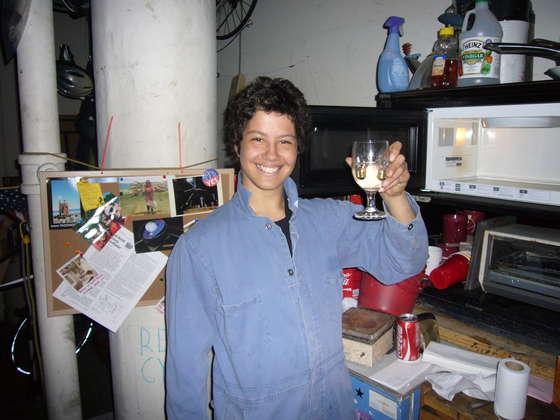
Step 3: Neon Bulbs
We threw in little neon bulbs, too.
The glass of water is sort of like a resistor, preventing the bulb from blowing out by absorbing some power.
Next page
